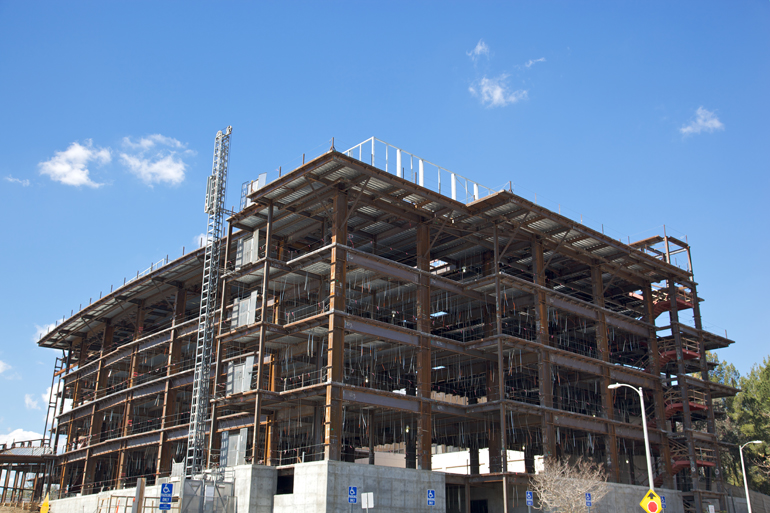With a state deadline looming, some California hospitals still need to retrofit or rebuild so that their structures can withstand an earthquake — and money remains a challenge.
Some hospital officials are turning to voters to raise money, while others are pursuing more innovative financing schemes.
About 7 percent of the state’s hospital buildings — 220 — are still designated as having the highest risk of collapse following an earthquake, according to the Office of Statewide Health Planning and Development. That’s a slight drop from 251 buildings a year ago.
These high-risk buildings must be retrofitted or rebuilt to meet certain safety standards by 2020 — the first of two deadlines.
Others, with a smaller risk of collapse, must meet safety standards by 2030. That includes a 24-bed rural hospital near Bakersfield that could be closed unless voters approve a parcel tax in June.
In the San Francisco Bay Area, Seton Medical Center, which has two patient care buildings in the highest danger category, is turning to an unusual financing scheme. The Daly City, Calif., hospital confirmed Wednesday it has secured a $40 million investment from financiers to bring its buildings up to code.
Seton’s parent company, Verity Health System, has borrowed the money from CleanFund and Petros PACE, private lenders that provide financing for energy efficiency, water conservation, renewable energy and, most recently, seismic improvements.
This type of financing, known as C-PACE (Commercial Property Assessed Clean Energy), is structured as a special assessment on a property tax bill. Unlike more traditional financing options, this type of “loan” is attached to the property and not the owner. That means if a hospital is sold, the repayment obligation transfers to the buyer.
Joe Euphrat, CleanFund’s managing director, said this is the first financing of that type to be used for seismic safety upgrades for hospitals in California.
“I think it’s a very helpful tool … and an alternative to more traditional types of financing,” he said.
Euphrat said he expects more hospitals with high-risk buildings to consider this new option.
The $40 million investment in Seton comes on top of $15 million approved last December by the San Mateo County Board of Supervisors for earthquake safety upgrades at the two-campus hospital.
Seton’s CEO, John Ferrelli, said the additional financing will allow upgrades to be completed well before the 2020 deadline.
“Ideally, hospitals would expect to fund these projects with current operations [revenue], but that wasn’t a reality for us,” Ferrelli said.
Seton Medical Center is the largest provider of Medi-Cal services in San Mateo County, and keeping it open is essential for the region’s low-income patients, he said.
The C-PACE loan also frees up other money to expand hospital programs and invest in equipment, Ferrelli said.
Jan Emerson-Shea, vice president of external affairs at the California Hospital Association, said financing upgrades to meet the state’s seismic safety requirements is especially hard for smaller and independent hospitals, some of which don’t even have the credit to qualify for loans.
The mandate came with no state or federal money, so the cost is completely borne by the hospitals. For some, the only way to comply with the state requirement is to consolidate with larger hospitals.
“There’s very little option,” Emerson-Shea said. The seismic safety requirement is never the only factor, but it is absolutely one of the reasons why hospitals would choose to affiliate.”
Older hospitals are not designed for health care delivery today, so facilities that choose to rebuild to meet the state standard do so with modern needs in mind, she said. That could mean growing in size as they add more private rooms, for example.
A California law, passed after the 1994 Northridge quake in California’s San Fernando Valley, strengthened 1973 legislation requiring hospitals in danger of collapse or significant damage after an earthquake to make repairs, rebuild or face closure.
While the state’s hospitals have made significant progress since then, 635 buildings at the second-highest risk level must be upgraded by 2030, according to state data. Hospitals that fail to meet the deadline could be denied licensing by the state’s Department of Public Health and forced to close.


